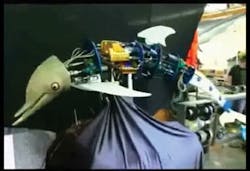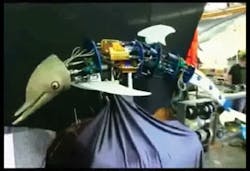Robotic Dolphin Stunt Double Uses Servo-Like Steppers
You might already know about Winter, the bottlenose dolphin that became tightly trapped in a crab trap line in 2006 when she was three months old, and lost her tail. She was rescued by the Clearwater Marine Aquarium (CMA) from Mosquito Lagoon near Cape Canaveral, Fla., and ultimately fitted with a prosthetic tail and made the star of the 2011 movie "Dolphin Tale."
You might not know about Winter's robotic stand-in and how it was controlled by servo-like stepper motors, drives and software.
KNB EFX Group contacted QuickSilver Controls for help with the robot dolphin's motion control. QuickSilver suggested smoothing out the performance of the robot's stepper motors to work more like servo motors, and reportedly turned around the needed software in about 72 hours.
"A robotic dolphin was needed as a stand-in for Winter in sequences which would either be too dangerous or difficult, or which could exhaust the recovering dolphin," explained QuickSilver's engineers. "KNB needed to mimic the size, coloration and water retention of the real dolphin in addition to mimicking the fluid motions. As the movie needed shots both in the water and at the surface of the water, a full-scale dolphin robot with internal electronics and actuators was used."
The mechanical spine and muscles of the robot dolphin were implemented using several aluminum disks linked together using sets of pivots along the center line with pairs of waterproof linear actuators providing the ability to flex up and down and side to side. The linear actuators were specialty products from Ultra Motion, driven by low-voltage stepper motors. Internal, sealed potentiometers provided absolute position feedback.
QuickSilver motion controllers were to close the loop around these open-loop steppers using the potentiometer. The motor velocity was commanded using a simple control loop, comparing the potentiometer feedback to the commanded signal. The gains were tuned down to smooth out the motions from the R/C controller. A second processing thread on the controller was used to monitor and recover from jams in the open-loop step motor.
To meet the filming schedule, QuickSilver added the ability to use R/C 1–2 ms control pulses as a standard option.


